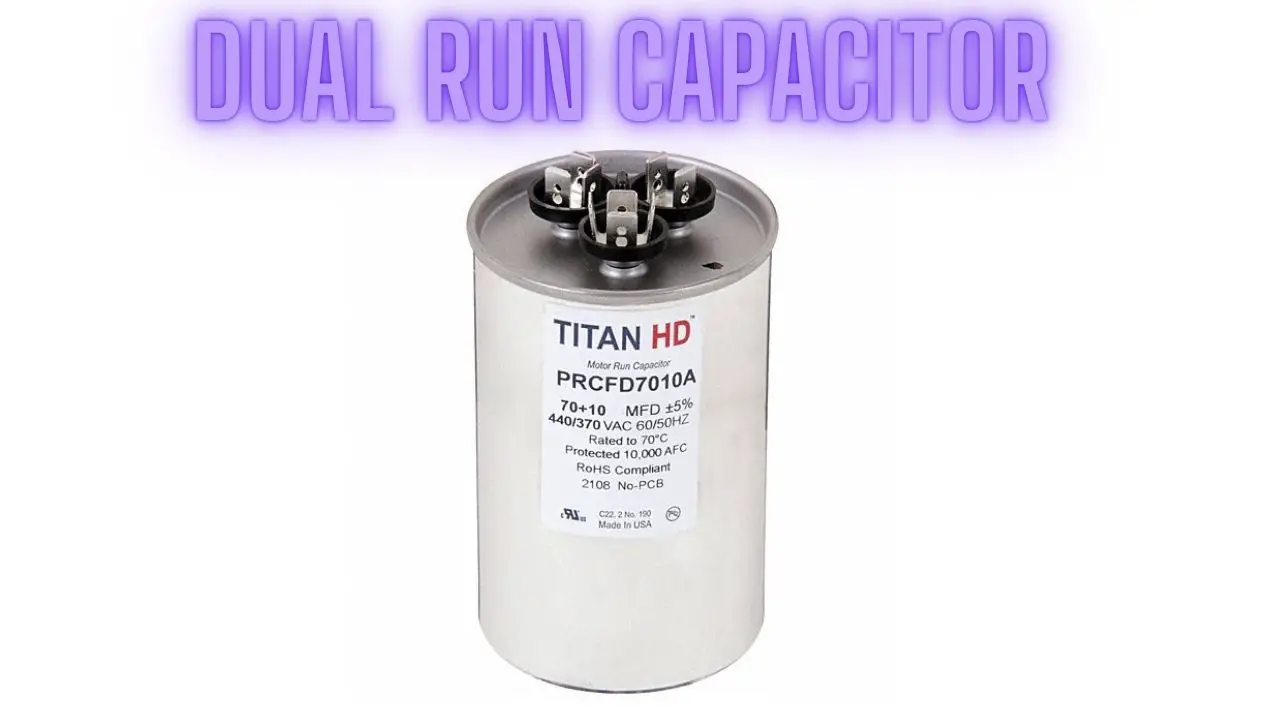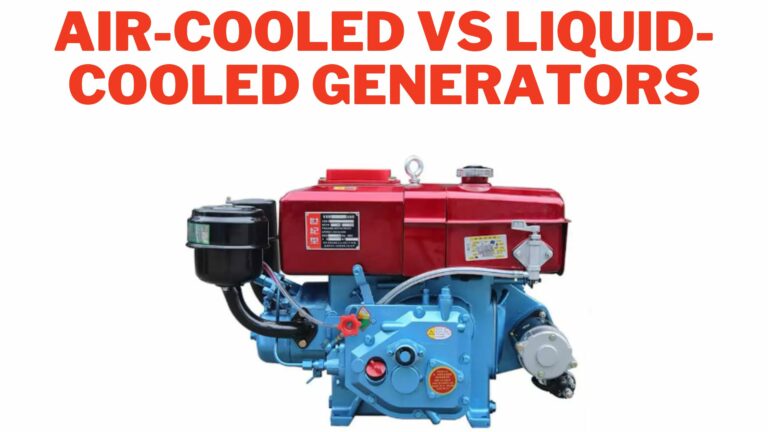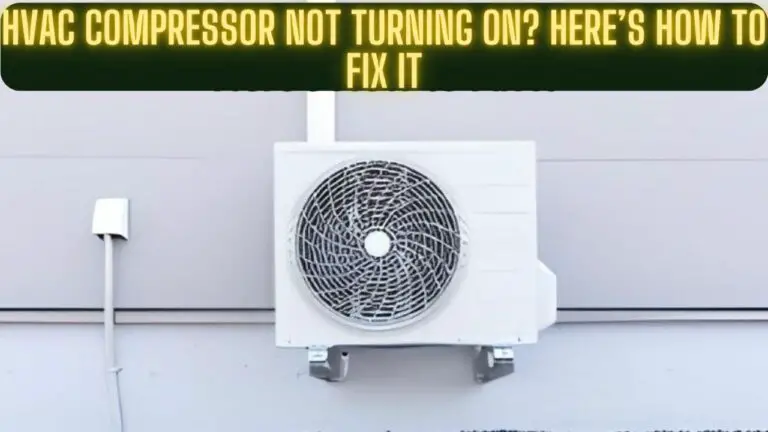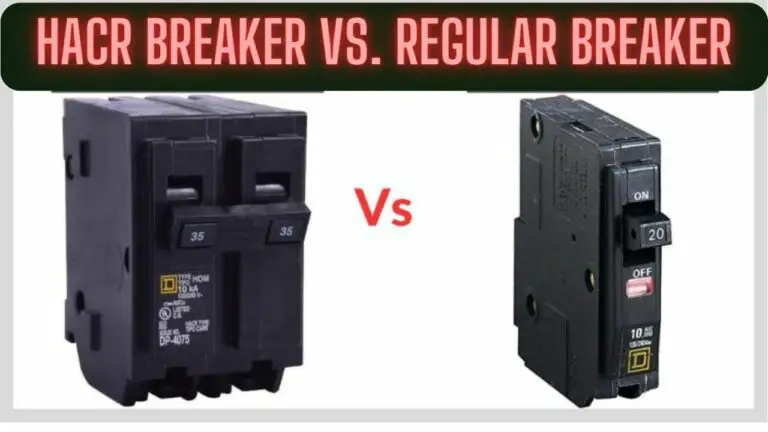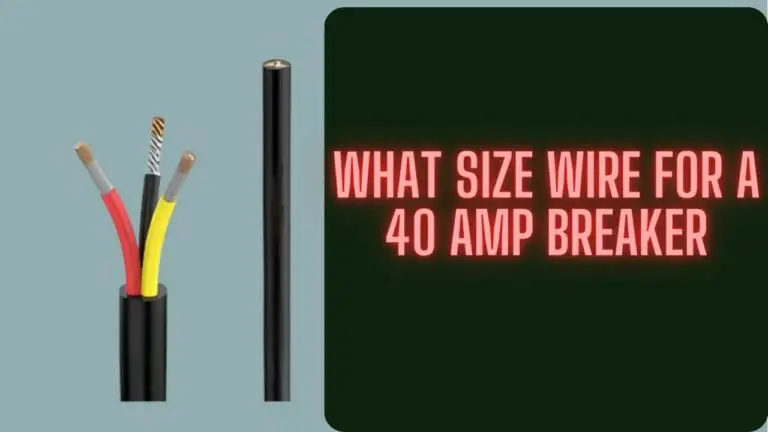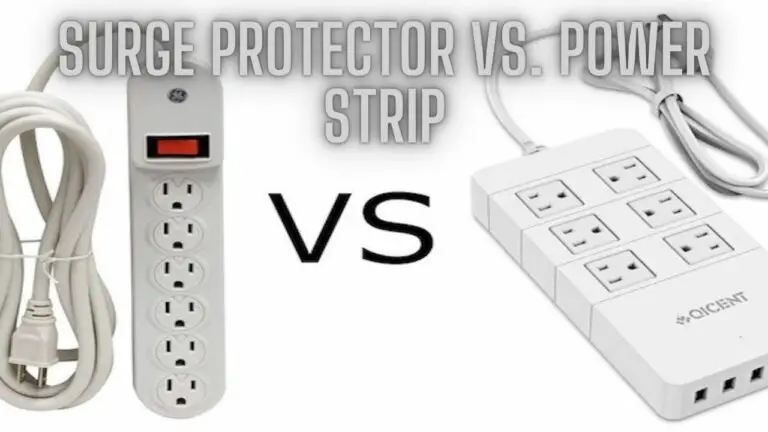Dual Run Capacitor: Understanding its Role in HVAC Systems
Introduction
A dual run capacitor is a crucial component in HVAC (Heating, Ventilation, and Air Conditioning) systems that helps in the efficient operation of both the compressor and the fan motor. This article aims to provide an in-depth understanding of what a dual run capacitor is, its functions, importance, common issues, and troubleshooting.
What is a Dual Run Capacitor?
A dual run capacitor, often referred to simply as a “dual capacitor,” is an electrical device used in air conditioning units and heat pumps. It combines two capacitors into a single unit, typically with three terminals: one common terminal (C), one for the compressor (Herm), and one for the fan motor (Fan). This design streamlines the wiring and saves space compared to using two separate capacitors.
Functions of a Dual Run Capacitor:
- Starting Boost: When the air conditioning unit starts, the compressor and the fan motor require an initial surge of energy to overcome inertia. The dual run capacitor provides this boost, allowing the compressor and fan to start smoothly.
- Running Capacitance: During operation, the dual run capacitor maintains a stable electrical charge, ensuring that the compressor and fan motor continue to run efficiently. It helps regulate the flow of electrical energy to keep the system functioning optimally.
Importance of a Dual Run Capacitor:
The dual run capacitor plays a vital role in maintaining the performance and efficiency of an HVAC system. Without a functional capacitor, the compressor and fan motor may struggle to start, leading to higher energy consumption, overheating, and potential damage to the system’s components.
Common Issues and Troubleshooting:
- Capacitor Failure: Over time, capacitors can degrade or fail due to factors like age, voltage fluctuations, or overheating. Signs of a failed capacitor include a buzzing sound, excessive heat, or visible bulging.
- Inadequate Cooling: If the capacitor is weak or defective, the compressor and fan motor may not receive the required electrical boost to start. This can result in inadequate cooling or insufficient airflow.
- Intermittent Operation: A failing capacitor might cause the compressor or fan motor to start intermittently or struggle to maintain a consistent speed. This can lead to inconsistent temperature control and inefficient operation.
Troubleshooting Steps:
- Visual Inspection: Check the capacitor for visible signs of damage, such as bulging, leaking, or burnt areas.
- Multimeter Test: Use a multimeter to measure the capacitance of the capacitor. Compare the reading to the manufacturer’s specifications to determine if it’s within the acceptable range.
- Start Assist: If you suspect a weak capacitor, you can install a “hard start kit” or “start assist kit” to provide an additional boost during startup. However, this is a temporary solution, and replacing the capacitor is recommended.
Replacement and Safety:
If you determine that the dual run capacitor is faulty, replacing it is crucial for the proper operation of your HVAC system. Always ensure you follow safety protocols and, if you’re not comfortable with electrical work, consider seeking the assistance of a qualified HVAC technician.
Understanding Dual Run Capacitor Connections in HVAC Systems
Dual run capacitors play a significant role in HVAC systems, providing the necessary electrical energy for both the compressor and the fan motor to start and operate efficiently. To ensure the proper functioning of your HVAC system, it’s essential to understand how to correctly connect a dual run capacitor. In this article, we’ll guide you through the process of dual run capacitor connections, highlighting the importance of proper wiring for optimal system performance and safety.
Components of a Dual Run Capacitor:
A dual run capacitor consists of two separate capacitors housed in a single unit. These capacitors serve different functions:
- Compressor Capacitor (Herm): This capacitor is responsible for providing the electrical boost needed to start the compressor efficiently.
- Fan Motor Capacitor (Fan): The fan motor capacitor ensures a smooth and consistent start for the fan motor, allowing it to operate effectively.
Dual Run Capacitor Connections:
Dual run capacitors typically have three terminals:
- C (Common): This terminal is connected to the common terminal on the HVAC system’s control board.
- Herm (Compressor): This terminal is connected to the compressor’s start winding.
- Fan (Fan Motor): This terminal is connected to the fan motor’s start winding.
Proper Wiring Steps:
Here’s a step-by-step guide to correctly connect a dual run capacitor in an HVAC system:
- Power Off: Before performing any electrical work, ensure that the power to the HVAC system is turned off to prevent electrical shock.
- Access the Capacitor: Open the access panel to locate the dual run capacitor. It’s usually located near the compressor unit.
- Disconnect Wires: Carefully disconnect the wires from the old capacitor. Take a picture or make notes of the wire connections for reference.
- Identify Terminals: Identify the terminals on the new dual run capacitor: C, Herm (Compressor), and Fan.
- Connect Common Terminal: Connect the wire from the common terminal on the control board to the C terminal on the new capacitor.
- Connect Compressor Terminal: Connect the wire from the compressor’s start winding to the Herm terminal on the new capacitor.
- Connect Fan Motor Terminal: Connect the wire from the fan motor’s start winding to the Fan terminal on the new capacitor.
- Secure Wires: Ensure all connections are secure and properly fastened.
- Replace Cover: Once all connections are made and secure, replace the cover on the access panel.
- Power On: Turn the power back on and test the HVAC system to ensure both the compressor and the fan motor start smoothly.
Safety Precautions:
- Always ensure that the power to the HVAC system is turned off before attempting any electrical work.
- If you’re not confident in your electrical skills, it’s recommended to seek the assistance of a qualified HVAC technician to perform the dual run capacitor connections.
- Double-check your connections to ensure they match the manufacturer’s specifications and the wiring diagram for your specific HVAC system.
How to Test Dual Run Capacitor?
Testing a dual run capacitor is essential to ensure the proper functioning of your HVAC system. A faulty capacitor can lead to inefficient performance or system breakdowns. Here’s a step-by-step guide to help you test a dual run capacitor using a multimeter:
Tools and Materials Needed:
- Multimeter
- Screwdriver (if needed to access the capacitor)
- Safety gloves and glasses (recommended)
Step 1: Safety Precautions
Before you begin, turn off the power to your HVAC system at the circuit breaker to prevent electrical shock. Wear safety gloves and glasses for added protection.
Step 2: Access the Capacitor
Open the access panel to locate the dual run capacitor. It’s usually located near the compressor unit. If you’re not sure where it is, consult your HVAC system’s manual.
Step 3: Discharge the Capacitor
Before testing, discharge the capacitor to prevent any residual electrical charge. Use a screwdriver with an insulated handle to bridge the terminals, making contact with both at the same time. Hold the screwdriver for a few seconds to ensure any stored energy is safely discharged.
Step 4: Set Multimeter
Set your multimeter to the capacitance testing mode. On most multimeters, this is denoted by a symbol resembling a sine wave (~) followed by an arrow. Choose a range that covers the capacitance values you expect from your capacitor (refer to the manufacturer’s specifications).
Step 5: Disconnect Wires
Carefully disconnect the wires from the capacitor terminals. Make a note or take a picture of the wire connections for reference when reconnecting them.
Step 6: Test Compressor Capacitance (Herm)
Place the multimeter’s probes on the Herm (compressor) terminal and the C (common) terminal. Make sure the probes are firmly in contact with the terminals.
Step 7: Record the Reading
Observe the reading on the multimeter. This reading indicates the capacitance value of the compressor capacitor. Compare this reading to the manufacturer’s specified capacitance range to determine if it’s within an acceptable range.
Step 8: Test Fan Motor Capacitance (Fan)
Move the multimeter’s probes to the Fan (fan motor) terminal and the C (common) terminal. Ensure the probes have good contact with the terminals.
Step 9: Record the Reading
Note the reading on the multimeter, which represents the capacitance value of the fan motor capacitor. Compare this reading to the manufacturer’s specified capacitance range.
Step 10: Compare Readings
If the readings from both tests are within the acceptable range specified by the manufacturer, the capacitors are functioning correctly. If the readings are significantly lower or higher than the specified range, the capacitor(s) may be faulty and require replacement.
Step 11: Reconnect Wires
Once testing is complete, reconnect the wires to the appropriate terminals on the capacitor.
Step 12: Restore Power and Test
Turn the power back on at the circuit breaker and test your HVAC system to ensure that the compressor and fan motor start and run smoothly.
Note: If you’re unsure about testing the capacitor or interpreting the results, it’s recommended to consult a qualified HVAC technician. Capacitors can store electrical energy even after discharge, so exercise caution throughout the testing process.
Dual Run Capacitor FAQS
What is a dual run capacitor?
A dual run capacitor is a single device that combines two capacitors in one unit. It serves the purpose of providing the starting boost for both the compressor and the fan motor in an HVAC system.
Why is a dual run capacitor used?
A dual run capacitor streamlines the wiring and space requirements in HVAC systems by combining the capacitors required for the compressor and fan motor into a single unit. This design simplifies installation and maintenance.
What are the terminals on a dual run capacitor?
A dual run capacitor typically has three terminals: Common (C), Herm (compressor), and Fan (fan motor). These terminals correspond to the components they provide energy to during startup and operation.
How does a dual run capacitor work?
During startup, the dual run capacitor provides a boost of electrical energy to both the compressor and fan motor. It helps overcome the inertia and allows these components to start smoothly. During operation, it ensures stable running capacitance for efficient performance.
What happens if a dual run capacitor fails?
If a dual run capacitor fails, the compressor and fan motor may struggle to start, leading to reduced efficiency, inadequate cooling, or system breakdowns. Prompt replacement is essential to avoid further damage to the HVAC system.
How can I test a dual run capacitor?
You can test a dual run capacitor using a multimeter in the capacitance testing mode. Discharge the capacitor first, then measure the capacitance values on both the Herm (compressor) and Fan (fan motor) terminals. Compare the readings to the manufacturer’s specifications.
Can I replace a dual run capacitor myself?
If you have experience with electrical work and HVAC systems, you can replace a dual run capacitor yourself. However, if you’re unsure or uncomfortable with the process, it’s recommended to seek the assistance of a qualified HVAC technician to ensure proper installation and safety.
How often should dual run capacitors be replaced?
Dual run capacitors can last around 10 to 20 years, but their lifespan can vary based on factors like usage, environmental conditions, and manufacturing quality. Regular maintenance and periodic inspections can help identify signs of degradation or failure.
What are the signs of a faulty dual run capacitor?
Common signs of a faulty dual run capacitor include difficulty starting the compressor or fan motor, reduced cooling efficiency, unusual noises, and visible bulging or leaking from the capacitor.
Can a faulty dual run capacitor be repaired?
Dual run capacitors cannot be repaired; they must be replaced if they are faulty. Attempting to repair a capacitor is not recommended due to safety concerns and the complexity of capacitor internals.
Are there different capacitance values for different HVAC systems?
Yes, HVAC systems have varying capacitance requirements for the compressor and fan motor. It’s crucial to refer to your HVAC system’s manual or consult a professional to ensure you choose a dual run capacitor with the appropriate capacitance values.
Conclusion
In conclusion, a dual run capacitor is a small yet critical component in HVAC systems. It provides the necessary electrical boost for the compressor and fan motor to start efficiently and maintain optimal performance. Regular maintenance and prompt replacement in case of failure are essential to ensure the longevity and efficiency of your HVAC system.

